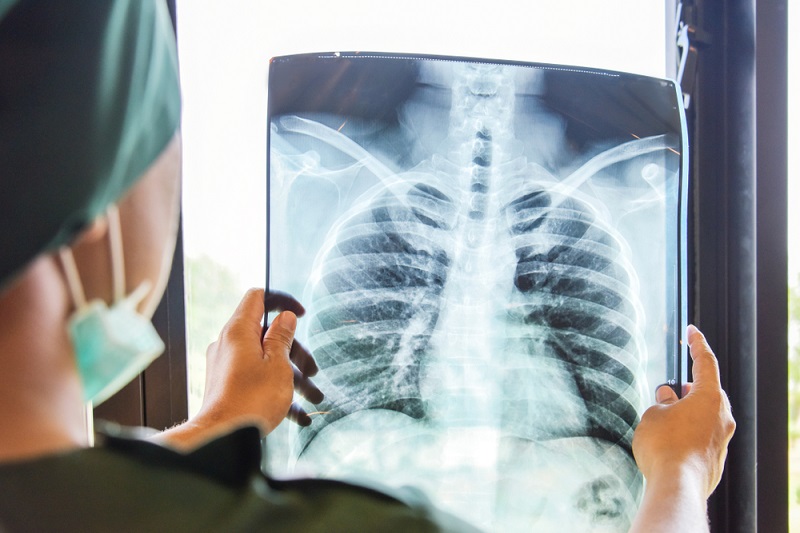A woman seemed recovered from COVID-19. Then both her lungs collapsed.
The woman had caught COVID-19 five weeks earlier, but had treated her symptoms at home.

A woman in the Netherlands had recovered after a seemingly mild COVID-19 infection when, suddenly, both of her lungs collapsed, according to a new report.
The 38-year-old woman went to the emergency room after she experienced shortness of breath and a sharp pain in her chest, according to the report, published Jan. 22 in The Journal of Emergency Medicine. She said her symptoms had started suddenly that day and seemed to be getting worse.
Five weeks earlier, the woman had developed symptoms of COVID-19, including fever and muscle aches, and had tested positive for the novel coronavirus. At that time, she had been able to treat her symptoms at home with acetaminophen and an inhaler. She had gone through an initial recovery period from her illness, but then her new symptoms started.
Related: 14 coronavirus myths busted by science
An X-ray at the ER showed she had "bilateral pneumothorax," meaning both of her lungs had collapsed. A collapsed lung (pneumothorax) occurs when air leaks from the lung into the space between the lung and the chest wall, which puts pressure on the lung and prevents it from expanding properly, according to the National Institutes of Health.
The condition can be caused by trauma to the chest or by certain underlying lung conditions, including chronic obstructive pulmonary disease (COPD). Patients who are put on a ventilator are also at risk for a collapsed lung because the device may "over-inflate" the lung, according to the University of Wisconsin-Madison.
But the woman's case was unusual because she had no risk factors for the condition, and she hadn't been hospitalized or put on a ventilator prior to her lung collapse, the authors said.
Get the world’s most fascinating discoveries delivered straight to your inbox.
Cases of collapsed lung in COVID-19 patients have been reported before, but mostly in hospitalized patients. A study of about 6,500 hospitalized COVID-19 patients in the U.K., published in September 2020 in The European Respiratory Journal, found that about 1% of those individuals experienced pneumothorax. Of the 60 patients described in the study as having a collapsed lung, most had received some type of ventilation support, but one-third had not. Only four patients experienced pneumothorax in both lungs.
The authors of the new report, from Elisabeth TweeSteden Hospital in the Netherlands, concluded that emergency physicians should be aware of pneumothorax as a possible "delayed COVID-19 related complication."
The cause of the woman's collapsed lung isn't clear. (When doctors can't identify a cause of a collapsed lung, this is known as "spontaneous" collapsed lung.) The authors can't say for sure that COVID-19 caused the woman's collapsed lung — the timing may have been coincidental, they said. But given that the woman had no other risk factors for collapsed lung, COVID-19 may have played a role. For example, the infection may have caused microscopic changes in the tissue and blood vessels in the lungs that eventually resulted in pneumothorax, the authors said.
Doctors typically treat pneumothorax by inserting a needle-like instrument into the ribs to remove excess air from around the patient's lungs, according to the Mayo Clinic. In the woman's case, doctors used this instrument to remove the air around her right lung. Her left lung was not treated because only a small part of it had collapsed and her doctors thought it would likely heal on its own. Indeed, four weeks later, both of her lungs had expanded back to their normal size, and she had no other lung complications, the report said.
Originally published on Live Science.

Rachael is a Live Science contributor, and was a former channel editor and senior writer for Live Science between 2010 and 2022. She has a master's degree in journalism from New York University's Science, Health and Environmental Reporting Program. She also holds a B.S. in molecular biology and an M.S. in biology from the University of California, San Diego. Her work has appeared in Scienceline, The Washington Post and Scientific American.


